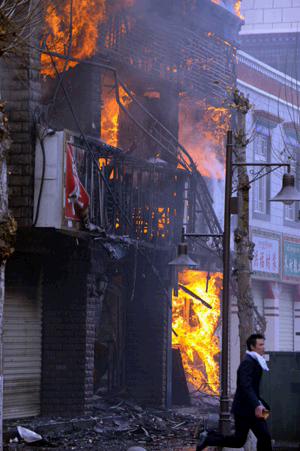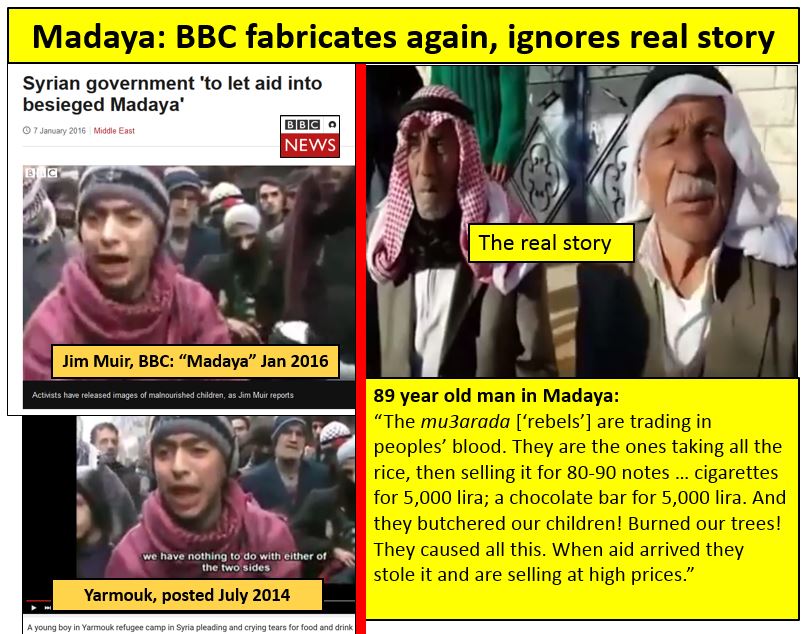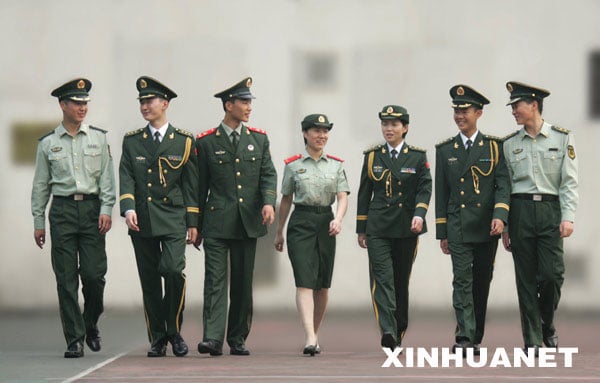War Propaganda and the Western Media: Fabricated Images. Fake Videos
Fake Videotape used by CNN

This article was first published in 2008 brings to the forefront the routine practice of the mainstream media of using fake images/videos in support of fabricated news stories.
The New York Times admitted in April 2014 that it used fake images regarding an alleged involvement of Russian soldiers in Eastern Ukraine.
Sorry, we made a mistake: The NYT’s retraction was presented as a technical error whereby the wrong pictures were mistakenly selected.
“A packet of American briefing materials that was prepared for the Geneva meeting asserts that the photograph was taken in Russia. The same men are also shown in photographs taken in Ukraine.
“Their appearance in both photographs was presented as evidence of Russian involvement in eastern Ukraine. The packet was later provided by American officials to The New York Times, which included that description of the group photograph in an article and caption that was published on Monday. … The dispute over the group photograph cast a cloud over one particularly vivid and highly publicized piece of evidence.” (NYT, April 22, 2014)
More recently, the BBC has used fake images with a view to accusing the government of Bashar al Assad of deliberately triggering famines by blocking supply routes int Madaya, a city controlled by the rebels close to Damascus.
Below a 2014 image in Yarmouk is used in support of a BBC story pertaining to Madaya in January 2016

Photo montage by Prof Tim Anderson
What should be understood is that the use of fabricated images is a routine procedure of the Western media. Its ultimate intent is to sustain the lie and mislead public opinion.
There are many instances of media manipulation.
The following article first published eight years ago in the wake of the March 2008 Tibet riots shows how CNN used fake videos showing “Chinese cops” involved in the repression of Tibetan activists in Lhasa.
It turns out that the cops are not Chinese but Indian, and the protest movement is not in Lhasa, capital of Tibet but in India.
CNN never retracted its “technical error”. The report –which served to demonize the Chinese authorities– was not the object of controversy as in the case of the NYT’s coverage of the protest movement in Eastern Ukraine or the BBC’s use of fake images in relation to Madaya, Syria.
Michel Chossudovsky, April 25, 2014, updated: January 12, 2016
Western Media Fabrications regarding the Tibet Riots
by Michel Chossudovsky
Global Research, April 16, 2008
On the day of the Lhasa Riots (March 14, 2008), there is evidence of media fabrication by CNN.
The videotape presented by CNN in its News Report on the 14th of March (1.00pm EST) was manipulated.
VIDEO: Tibet monks protest against Chinese rulers (CNN, March 14, 2008)
The report presented by CNN’s Beijing Correspondent John Vause focussed on the Tibet protests in Gansu province and in the Tibetan capital Lhasa.
What was shown, however, was a videotape of the Tibet protest movement in India.
Viewers were led to believe that the protests were in China and that the Indian police shown in the videotape were Chinese cops.
At the outset of the report, a few still pictures were presented followed by a videotape showing police repressing and arresting demonstrators in what appeared to be a peaceful protest:
.
JOHN VAUSE, CNN CORRESPONDENT
[CNN Vause reports on the protest movement in Gansu province. (starts at 1′.00)]
CNN received these photographs from Gansu province, where there is a large Tibetan population. [still photographs followed by video footage] According to Students for a Free Tibet, about 2,000 protestors took to the streets earlier today. They were there for about three hours. They flew the Tibetan flag and called for an independent Tibet. All of this comes after days of unrest in Tibet after monks, who were marking the 49th anniversary of a failed uprising against Chinese rule.(CNN News, 1.00pm EST, March 14, 2008)
The voice over of John Vause then shifts into reporting on violence in Lhasa. The videotape however depicts the Tibetan protest in Himashal Pradesh, India.
[JOHN VAUSE, CNN CORRESPONDENT]
And what could be worrying here to Beijing is that these demonstrations are being joined by ordinary Tibetan civilians, lay Tibetans. The targets here are ethnic Chinese. We’ve been told by one Chinese woman that she was attacked by Tibetan rioters. Her injuries sent her to hospital.
Also under fire here, Chinese-owned businesses, as well as government offices, and also the security forces.
According to U.S.-based human rights groups, the three main monasteries on the outskirts of Lhasa have now been surrounded by Chinese troops, and they’ve been sealed off.
We’ve also heard over the last couple of days, according to human rights groups, that more than a dozen monks have been rounded up and arrested. And there are reports, unconfirmed, that at least two people have been killed.
The video footage, which accompanied CNN’s John Vause’s report, had nothing to do with China. The police were not Chinese, but Indian cops in khaki uniforms from the Northeastern State of Himachal Pradesh, India.
Viewers were led to believe that demonstrations inside China were peaceful and that people were being arrested by Chinese cops.
Chinese Cops in Khaki Uniforms
1′.27-1′.44″ video footage of “Chinese cops” and demonstrators including Buddhist monks. Chinese cops are shown next to Tibetan monks
Are these Chinese Cops from Gansu Province or Lhasa, the Tibetan capital, as suggested by CNN’s John Vause’s Report?
REPORT ON CHINA, MARCH 14
Alleged Chinese cops repressing Tibet demonstrators in China , CNN, March 14, 2008 1′.36”
Alleged Chinese cops in khaki uniforms repressing Tibet demonstrators in China, CNN, March 14, 2008 1’40”
Their khaki uniforms with berets seem to bear the imprint of the British colonial period.
Khaki colored uniforms were first introduced in the British cavalry in India in 1846.
Khaki means “dust” in Hindi and Persian.
Moreover, the cops with khaki uniforms and mustache do not look Chinese.
Look carefully.
They are Indian cops.
The videotape shown on March 14 by CNN is not from China (Gansu Province or Lhasa, Tibet’s Capital). The video was taken in the State of Himachal Pradesh, India. The videotape of the Tibet protest movement in India was used in the CNN report on the Tibet protest movement within China.
In a March 13 Report by CNN, demonstrators are being arrested by Indian police in khaki uniforms during a protest march at Dehra, about 50 km from Dharamsala in the northern state of Himachal Pradesh.
VIDEO; Tibet Protest movement in India, CNN, March 13, 2008 [See Complete video below, this was the footage used for the report out of China]
“Indian police arrested around 100 Tibetans on Thursday, dragging them into waiting police vans, as they tried to march to the Chinese border to press claims for independence and protest the Beijing Olympics.” (REUTERS/Abhishek Madhukar (INDIA))
Below are still images from the CNN’s report on March 13, on the protest movement in Himachal Pradesh, India:
Compare these images to those in the March 14 CNN report.
Same cops, same uniforms, same Indian style moustache.
CNN MARCH 13 REPORT ON INDIA
Indian cops repressing Tibet demonstrators in Himachal Pradesh, India CNN, March 13, 2008 0′.53″
Indian cops repressing Tibet demonstrators in Himachal Pradesh, India CNN, March 13, 2008 1′.02″
Indian cops repressing Tibet demonstrators in Himachal Pradesh, India CNN, March 13, 2008, 1′.18″
Indian cops repressing Tibet demonstrators in Himachal Pradesh, India CNN, March 13, 2008 2.04″
We invite our readers to examine these two reports as well as the Transcript of the March 14 CNN program.
The CNN’s March 14 report on the Tibet Protest movement in China shows Chinese cops in khaki uniforms, yellow lapels and berets. While the videotape is not identical to that of March 13, CNN’s coverage of the events in China on March 14 used a videotape taken from the coverage of the Tibet Protest movement in India, with Indian cops in khaki uniforms.
The protest movement in India on March 13 was “peaceful”. It was organised by the Dalai Lama’s “government in exile”. It took place within 50 km of the headquarters of the Dalai Lama in Dharamsala.
The Western media was invited in to film the event, and take pictures of Buddhist monks involved in a peaceful, nonviolent march. These are the pictures which circled the World.
So what has occurred is that CNN has copied and pasted its own videotape of the Tibet Protest movement in India and has fabricated a Gansu Province/ Lhasa, China “peaceful” protest movement with Chinese cops in khaki British colonial style uniforms.
The Chinese never adopted the British style khaki uniform and beret.
These uniforms do not correspond to those used by the police in China. (See photograph below)

No khaki uniforms in China. These are the uniforms of China’s “Armed Police”.
Meanwhile, the images of the violent riots in Lhasa, in which a criminal mob set fire to shops, homes and schools, burning several people alive, and stabbing innocent civilians with knives were not shown on network TV in the US and Western Europe. Small segments of the riots in Lhasa were shown out of context and with a view to accusing the Chinese authorities of repressing a “peaceful protest”.(See our report on the events, see coverage of the Lhasa Riots by China’s CC-TV)
While the videotape used is not identical, both CNN reports, however, show the same cops in khaki uniforms and the same Tibetan demonstrators in India. The footage used in support of CNN’s March 14 coverage of the protext movement in China has nothing to do with China. it happened in India.
CNN has got its countries mixed up.
Sloppy journalism or media fraud?
VIDEO: Tibet monks protest against Chinese rulers (CNN, March 14, 2008)
VIDEO; Tibet Protest movement in India, (CNN, March 13, 2008)
COMPLETE TRANSCRIPT OF CNN NEWS COVERAGE ON TIBET (MARCH 14, 2008
CNN NEWSROOM 1:00 PM EST
March 14, 2008 Friday
[with Don Lemon and John Vause reporting from Beijing]
….
LEMON: All right. So this place, we know, should be known for peace. Right? But that is not what is happening here lately.
Buddhist monks demonstrating for independence from China. Ethnic Tibetans join in, and soon — soon streets are filled with screams, with gunfire, with rioting. And so far the Chinese government has refused to allow CNN to even enter Tibet.
Our John Vause brings us what he knows. He’s in Beijing.
(BEGIN VIDEOTAPE)
JOHN VAUSE, CNN CORRESPONDENT: The latest information from our sources in Lhasa tell us that the streets are basically deserted, except for patrols by police cars and armored military vehicles.
We’re told fires are still burning and phone lines are still down, but electricity has been restored. And the situation there now is described as relatively calm. But these protests do appear to be spreading to the east of the country.
CNN received these photographs from Gansu province [still picture followed by live video of Indian protest], where there is a large Tibetan population. According to Students for a Free Tibet, about 2,000 protestors took to the streets earlier today. They were there for about three hours. They flew the Tibetan flag and called for an independent Tibet. All of this comes after days of unrest in Tibet after monks, who were marking the 49th anniversary of a failed uprising against Chinese rule.
And what could be worrying here to Beijing is that these demonstrations are being joined by ordinary Tibetan civilians, lay Tibetans. The targets here are ethnic Chinese. We’ve been told by one Chinese woman that she was attacked by Tibetan rioters. Her injuries sent her to hospital.
Also under fire here, Chinese-owned businesses, as well as government offices, and also the security forces.
According to U.S.-based human rights groups, the three main monasteries on the outskirts of Lhasa have now been surrounded by Chinese troops, and they’ve been sealed off.
We’ve also heard over the last couple of days, according to human rights groups, that more than a dozen monks have been rounded up and arrested. And there are reports, unconfirmed, that at least two people have been killed.
Beijing has now moved to seal off Tibet, banning foreigners and journalists from traveling there. Flights and train services have also been canceled.
John Vause, CNN, Beijing.
(END VIDEOTAPE)
This is not the only example of media fabrication where video images and photographs are manipulated.
What really happened.
Compare CNN’s report using a fake videotape to the coverage of the Lhasa riots on China State TV.
coverage of the Lhasa Riots by China State Television CC-TV
Who is Telling the Truth?

